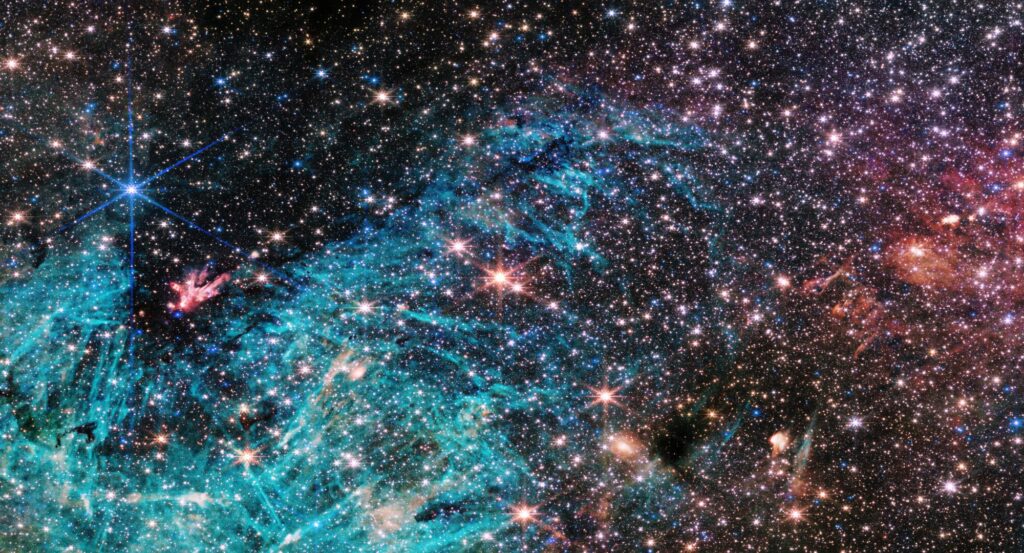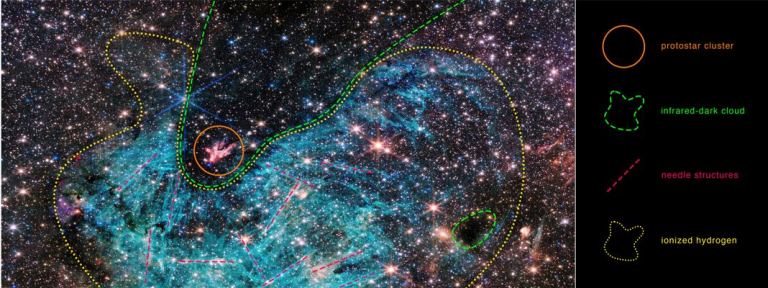James Webb Space Telescope captures stunning view of Milky Way’s heart
Thanks to its infrared capabilities, the James Webb Space Telescope (JWST) enables astronomers to peer through the gas and dust obstructing the center of the Milky Way, unveiling previously unseen features. Among the intriguing discoveries is the star-forming region known as Sagittarius C, positioned approximately 300 light-years from the Milky Way’s supermassive black hole. In this region, an estimated 500,000 stars are forming despite being bombarded by radiation from densely packed stars. The question arises: how can stars develop in such an intense environment?

Astronomers currently lack an explanation for this phenomenon.
Samuel Crowe, the principal investigator of the observation team and an undergraduate student at the University of Virginia in Charlottesville, emphasized the unprecedented level of resolution and sensitivity provided by Webb’s infrared data. This allows for the first-time observation of numerous features in the region. Webb’s detailed imagery facilitates the study of star formation in this unique environment, offering insights that were previously unattainable.
The depicted area in the image spans about 50 light-years and is situated approximately 25,000 light-years from Earth. Crowe and his team assert that the galactic center’s proximity enables JWST to study individual stars, providing unparalleled information on how stars form in this region compared to other parts of the galaxy. One intriguing question is whether more massive stars form at the center of the Milky Way rather than at the edges of its spiral arms.
Within this young cluster, the researchers identified an enormous protostar, previously unknown, at the cluster’s core. This protostar surpasses 30 times the mass of our Sun. The astronomers note that the cloud from which the protostars emerge is so dense that the light from stars behind it cannot reach the telescope, creating the illusion of a less crowded area when, in reality, it is one of the most densely packed regions in the image. Infrared-dark clouds, resembling holes in the starfield, mark the spots where future stars are forming.
Another intriguing feature in the region that Crowe intends to investigate further is the needle-like structures in ionized hydrogen, appearing chaotically oriented in various directions.

Crowe expressed, “The imagery captured by Webb is breathtaking, and the scientific insights it promises are even more remarkable. Massive stars serve as factories, generating heavy elements within their nuclear cores. Enhancing our understanding of these celestial entities is akin to unraveling the origin story of a significant portion of the universe.”
Do not forget to share your opinion with us to provide you with the best posts !




0 Comments